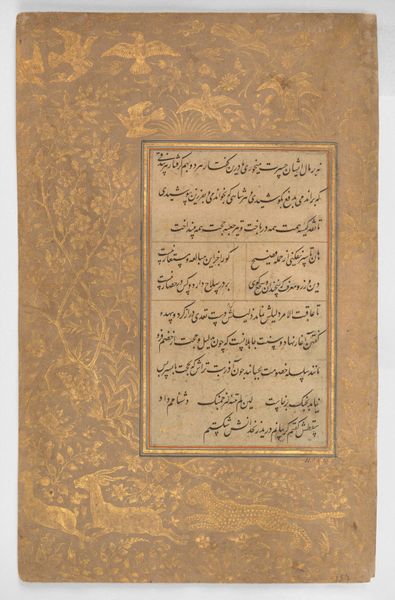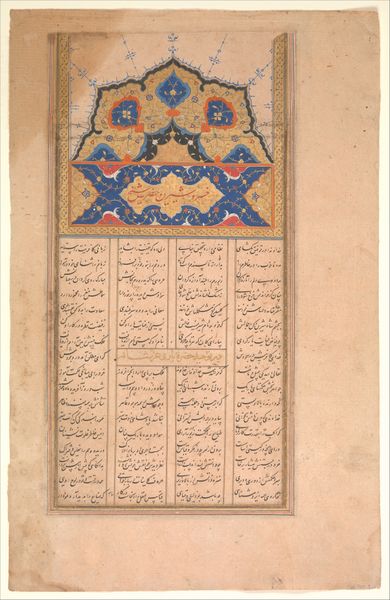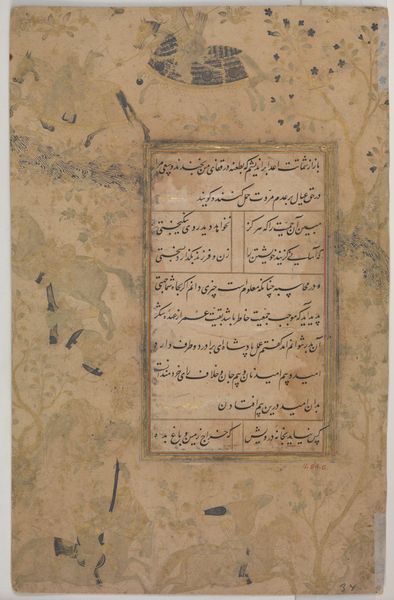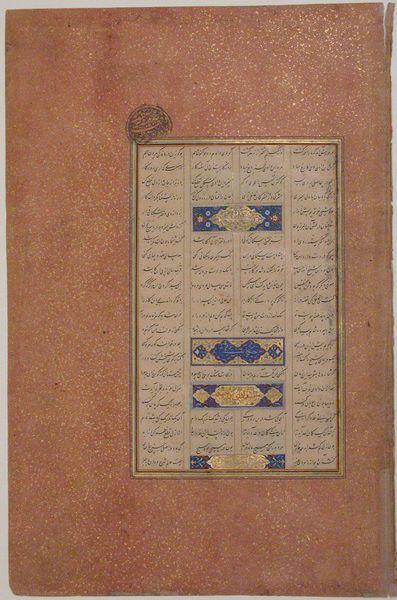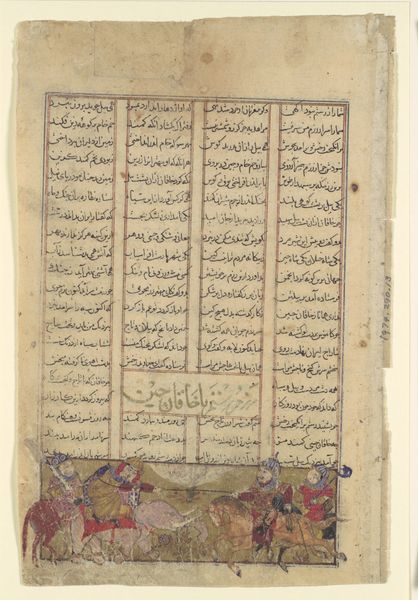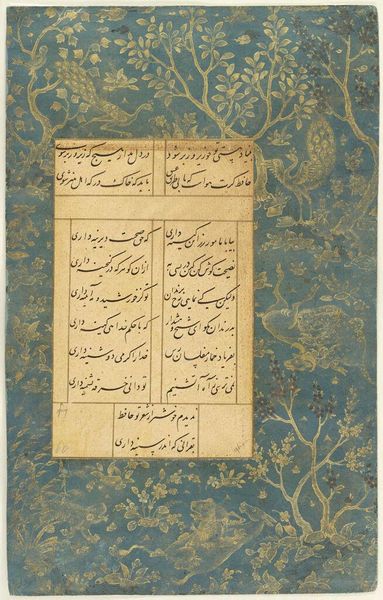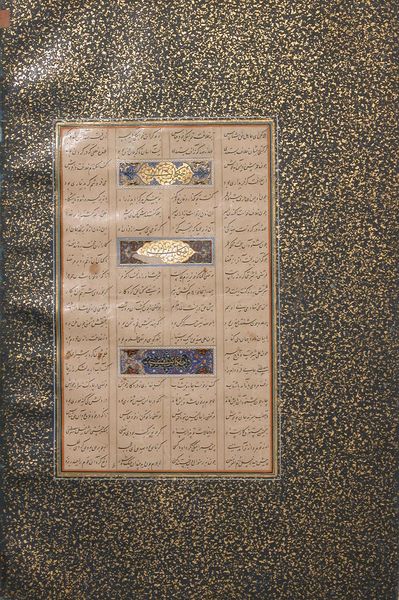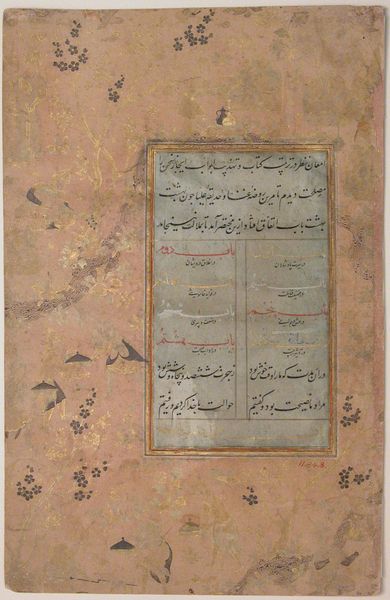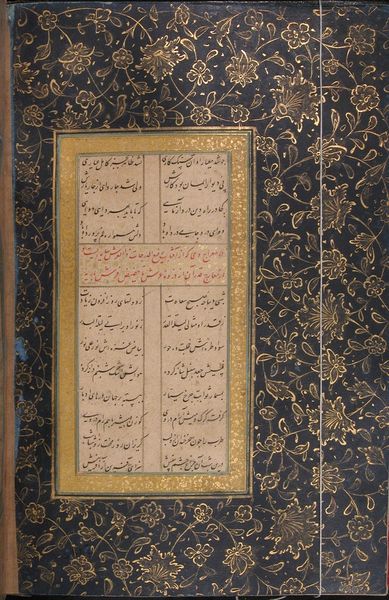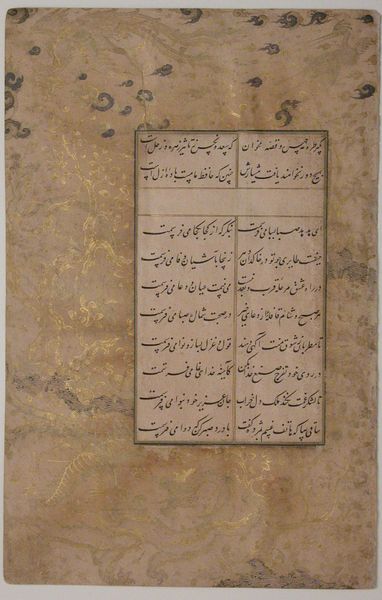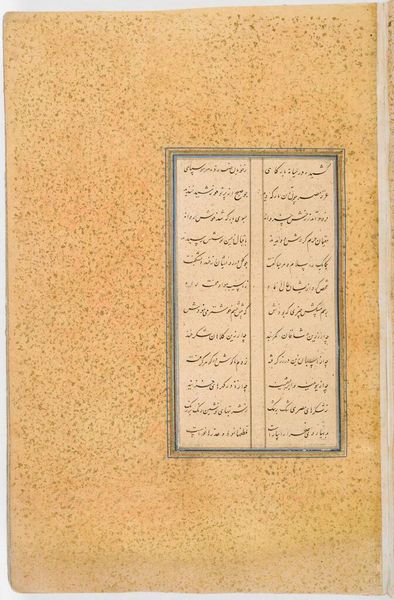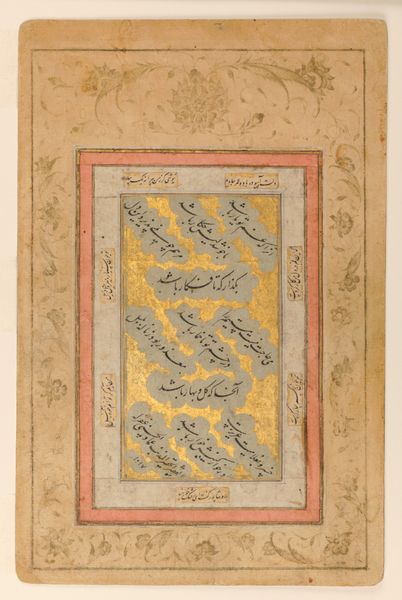
"Fifth Joust, The Death of Simurgh by the Hands of Isfandiyar," Folio from a Shahnama (Book of Kings) 16th century
0:00
0:00
drawing, paper, ink
#
drawing
#
narrative-art
#
paper
#
ink
#
islamic-art
#
miniature
Dimensions: H. 13 in. (33 cm) W. 9 in. (22.9 cm)
Copyright: Public Domain
Curator: We're looking at a folio from a Shahnama, or Book of Kings, created in the 16th century. This drawing in ink on paper, titled "Fifth Joust, The Death of Simurgh by the Hands of Isfandiyar," depicts a pivotal scene from the Persian epic. It now resides at the Metropolitan Museum of Art. Editor: My first impression is one of intricacy. Even without understanding the Farsi text surrounding the central image, I’m immediately drawn to the ornate borders, which set a rich, almost melancholic tone for the visual story being told within. Curator: The image itself is a miniature painting, a hallmark of Islamic art. Isfandiyar, a legendary Iranian hero, is shown slaying the Simurgh, a mythical bird. Iconographically, the Simurgh is more than just a bird. It represents ancient wisdom and, in some contexts, even divine grace. Its death at the hands of Isfandiyar marks the loss of something profound within the narrative. Editor: That is fascinating, and contributes to the visual drama that unfolds on the page. The hero’s pose—so decisive and violent—is made even more poignant knowing what the Simurgh represents. The stark contrast between the detailed rendering of Isfandiyar, and the almost dream-like quality of the Simurgh, suggests the clash between human will and something greater, almost unknowable. Curator: The choice to depict this specific moment, “the death of,” reveals a particular socio-political stance on power and its cost. The artist, through this selected narrative, shows the hero sacrificing knowledge or intuition in pursuit of a kingdom. It speaks to the choices leaders face and the sacrifices made for power, a timeless theme explored through the visual symbols. Editor: The muted colors amplify the sense of loss and the weight of destiny that pervades the story. Even the calligraphy, presented in neat columns, acts like a visual anchor, lending further seriousness to this tragic episode. It all coalesces into a striking commentary on the human condition. Curator: It’s a powerful reminder that art doesn't just reflect history, but shapes how we remember and interpret it, with symbols and stories constantly evolving through political and social context. Editor: Indeed, and by looking deeply into visual emblems, like the Simurgh, we can still perceive a resonance and a memory today, even across time and cultures.
Comments
No comments
Be the first to comment and join the conversation on the ultimate creative platform.

